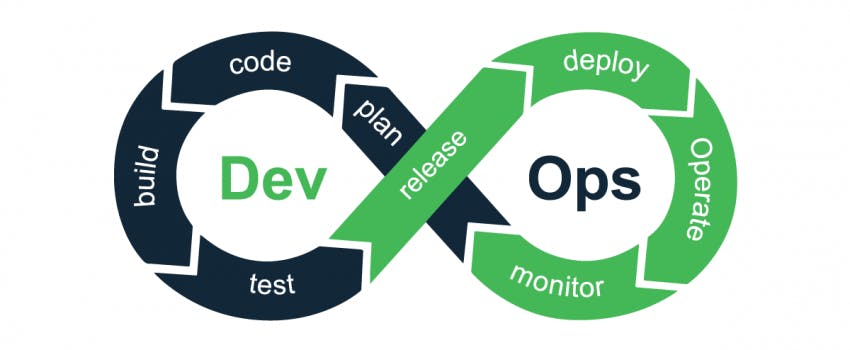By now, you may have heard the term DevOps used many times. You may have a friend who recently got a new job with that title. Or the development team you are currently working with have thrown that word around a few times. But what exactly is DevOps? And how can we practically apply our knowledge of DevOps as we work with developers? In this article, we will dive into where DevOps came from, define what it is, and share the benefits of having DevOps resources.
Software Development vs. IT OperationsBefore we jump into what DevOps is, we first have to understand the relationship between software development and IT operations. These always operate on separate teams, and traditionally, they experience tons of friction in their working relationship. To best understand this, we will briefly highlight the roles and pain points of both employees below. We will use two of our very own team members Chris and Bryan as an example.
Chris the Software EngineerOur developer Chris mainly focuses on product design and development. His main goal is to bring new and exciting features Aloa clients and vendors who are using the Aloa platform to outsource their software development overseas. The key for Chris is speed of deployment because he wants to beat Aloa's competitors to the market with the release of new features. However, Chris is only able to push code to the production environment once per month. And when he does so, unforeseen errors sometimes occur, costing him more time to deploy the builds he's been working on.
Bryan the System AdministratorBryan is our system administrator from our operations team. His job is to maintain 99.9% uptime on the Aloa platform's production environment. The number of servers Bryan has to manage keeps growing because Aloa is a fast growing startup that's constantly launching new products. This poses an increasing challenge for Bryan because the tools he uses become less effective the more servers he manages.
On top of that, the new code he receives from Chris normally needs to be touched up a bit more before they get deployed to Aloa's production environment. This is why Bryan keeps Chris to a once per month deployment schedule. Bryan has to deal with any fires that come up in the production environment post-deployment, so it's best for him to be very careful and take his time before deploying Chris' new code into production.
DevOps DefinedAs you can see, there's a ton of friction between Chris and Bryan's working relationship. That friction only increases the bigger the team. Imagine a large tech company with multiple development teams, IT operation teams, and hundreds of servers they have to manage. Guaranteeing smooth code deployment to production and a high uptime would be an absolute nightmare!
This is exactly where DevOps comes in. DevOps is a set of practices that combines software development (Dev) and IT operations (Ops). The goal of DevOps is to shorten the software development life cycle. It also aims to provide continuous product delivery with high product quality.
DevOps as a practice came out of agile development methodology, and allows for companies to quickly iterate on their products, at scale. Going back to the example of Chris and Bryan, a DevOps team would be able to integrate them to improve collaboration and productivity. They would do this through 3 main ways: automating infrastructure, streamlining workflows, and continuously measuring application performance.
Advantages of Having DevOpsThere are many benefits of hiring a DevOps resource. One of the key reasons is automation. DevOps teams try to automate everything from code testing to workflows to infrastructure. Automation here is key because it not only reduces time spent, but it also reduces the chance for human error.
Second reason a faster time to market. A DevOps team are able to write software in small chunks that are then integrated, tested, monitored, and deployed - usually in hours or days. This practice is far more agile than the traditional way of writing large chunks of software which might take weeks or months. Writing smaller chunks of code, will allow your development team to increase the frequency as well as the speed of deployments.
Finally, a DevOps team will allow you to focus more on improving the business and addressing customer needs. When a company is able to built better products that address the true needs of the market, it means that they will have happier customers. Happier customers mean more referrals and higher revenue growth.
Final ThoughtsSold on hiring a DevOps team yet? Haha just kidding. Having a DevOps team or even just one DevOps resource is definitely a huge investment and isn't something to be taken lightly. DevOps is needed when scaling both development and operations. But it isn't needed as much when you have one or two developers on your team. If your team is experiencing any of the pain points I mentioned, I would definitely recommend looking into hiring a DevOps resource. If the pain points mentioned do not resonate with you, I'd recommend holding off for the time being.
That's all on DevOps for now! If you are curious to learn more software development concepts, you can check out our other blogs here. If you have any questions regarding software development, feel free to reach us at resources@aloa.co!
---------------------------
This article was written by Aloa.
Do you have any software needs?
Get in touch with us here!
